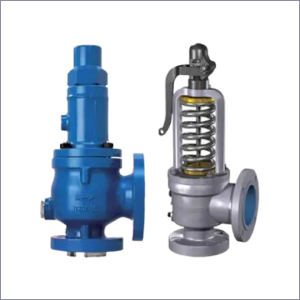Choosing the Right Pipe Clamp for Modern HVAC Systems
Have you ever wondered how all those long pipes in HVAC systems stay firmly in place without vibrating or falling apart? The answer lies in something small but mighty — the pipe clamp. In modern HVAC (Heating, Ventilation, and Air Conditioning) systems, pipe clamps are critical. Choosing the right pipe clamp isn’t just about holding pipes together; it’s also about ensuring system efficiency, safety, and long-term performance. This article will guide you through the key things to consider when selecting pipe clamps for modern HVAC systems and how to keep them safe and reliable over time.
Understand the Pipe Material and Size
The first thing to consider is what kind of pipes you’re working with. HVAC systems use different materials like copper, PVC, steel, or PEX. Each material needs a specific type of clamp. For example, rubber-lined clamps are great for copper pipes because they prevent scratching and reduce vibration. You also need to choose clamps that fit the exact diameter of the pipe — too tight and it may damage the pipe, too loose and it won’t hold properly. Always measure and match the clamp size to ensure a secure and balanced fit.
Consider the Weight and Load-Bearing Needs
HVAC pipes can carry heavy loads, especially when filled with fluid or refrigerant. The pipe clamp must be strong enough to support the weight without sagging or snapping. For heavier pipes, look for heavy-duty clamps made from steel or other reinforced materials. Adjustable clamps are also useful in long runs of piping, where minor shifts in weight distribution may occur. To make this setup safe, clamps should be installed using load-rated anchors and spaced according to industry guidelines to prevent bending or stress on the pipe.
Think About Thermal Expansion and Contraction
If a clamp holds the pipe too tightly, it can lead to cracking or joint failure. That’s why sliding or cushioned pipe clamps are ideal in areas with frequent temperature variation. These clamps allow slight movement without letting the pipe lose support. Installing expansion joints or using flexible clamps in key points of the system can greatly reduce damage from thermal stress and make the system safer in the long run.
Check for Vibration and Noise Control
Vibration is a common problem in HVAC systems, especially near compressors or pumps. To handle this, choose vibration-isolating clamps or those with rubber padding. These types of clamps absorb the energy from vibration and reduce noise levels as well. Not only does this improve comfort in residential and commercial buildings, but it also prevents long-term wear on the system. Regularly inspect these clamps to ensure the padding remains intact for continued safety.
Evaluate the Environment of Installation
Outdoor systems, for example, need pipe clamps that resist corrosion from rain, sunlight, and dust. In indoor installations, especially near humidifiers or in basements, moisture resistance is key. Make sure to use pipe clamps treated with anti-rust coating or plastic-lined versions in moisture-prone areas. This prevents long-term deterioration and maintains a safe and reliable pipe support setup.
Ease of Maintenance and Accessibility
HVAC systems require regular inspection and sometimes pipe replacements. Using clamps that are easy to install, open, and adjust can save time and cost during maintenance. Quick-release clamps or hinged designs allow technicians to access the pipes quickly without disturbing the rest of the system. To ensure safety, always choose clamps that lock securely once reattached. Also, mark or map out clamp positions to speed up future maintenance work without risking damage.
Compliance with Industry Standards
Always choose pipe clamps that meet local safety and building codes. This ensures that they can handle the load and temperature ranges of the system. For HVAC setups, clamps should meet HVAC-specific support standards like those provided by ASHRAE or SMACNA. Using certified clamps also helps during inspections and can prevent liability issues. Keeping documentation of the clamp specs and certifications on file makes it easier to prove compliance when needed.
Budget vs. Performance
While it’s tempting to go for cheaper options, low-cost pipe clamps may not last in high-demand HVAC applications. Consider it a long-term investment — using the right, durable clamp reduces maintenance calls, improves efficiency, and avoids unexpected pipe failure. Work with reliable suppliers who offer quality options at different price points. Always prioritize function and safety over initial savings to get the best value from your HVAC system.
Final Safety Considerations
Proper installation of pipe clamps is just as important as choosing the right type. Misaligned or over-tightened clamps can cause serious damage or reduce efficiency. Make sure the installation is done by trained professionals using the right tools. Regular safety checks can help spot worn-out clamps, rust, or shifting, which could lead to leaks or vibration issues. Replacing a small clamp on time can prevent bigger, more expensive problems down the road.
Conclusion
Choosing the right pipe clamp for a modern HVAC system may seem like a small detail, but it plays a big role in the system's safety, efficiency, and longevity. From selecting the correct material and size to addressing temperature changes and vibrations, every factor matters. With the right planning and maintenance, pipe clamps can ensure your HVAC system runs smoothly and safely for years to come. Whether you're installing a new system or upgrading an old one, investing in quality pipe clamps is a smart move you won’t regret.




Choosing the right pipe clamp is vital for HVAC systems to ensure stable, vibration-free piping. High-quality clamps reduce noise and prevent structural stress. Additionally, samplers in HVAC systems help monitor air or fluid quality by extracting representative samples, ensuring proper filtration, temperature control, and overall system performance and compliance.
ReplyDeleteDamper Valves Manufacturers